Page List
GOLDWORK
EMBROIDERY
Techniques and Projects
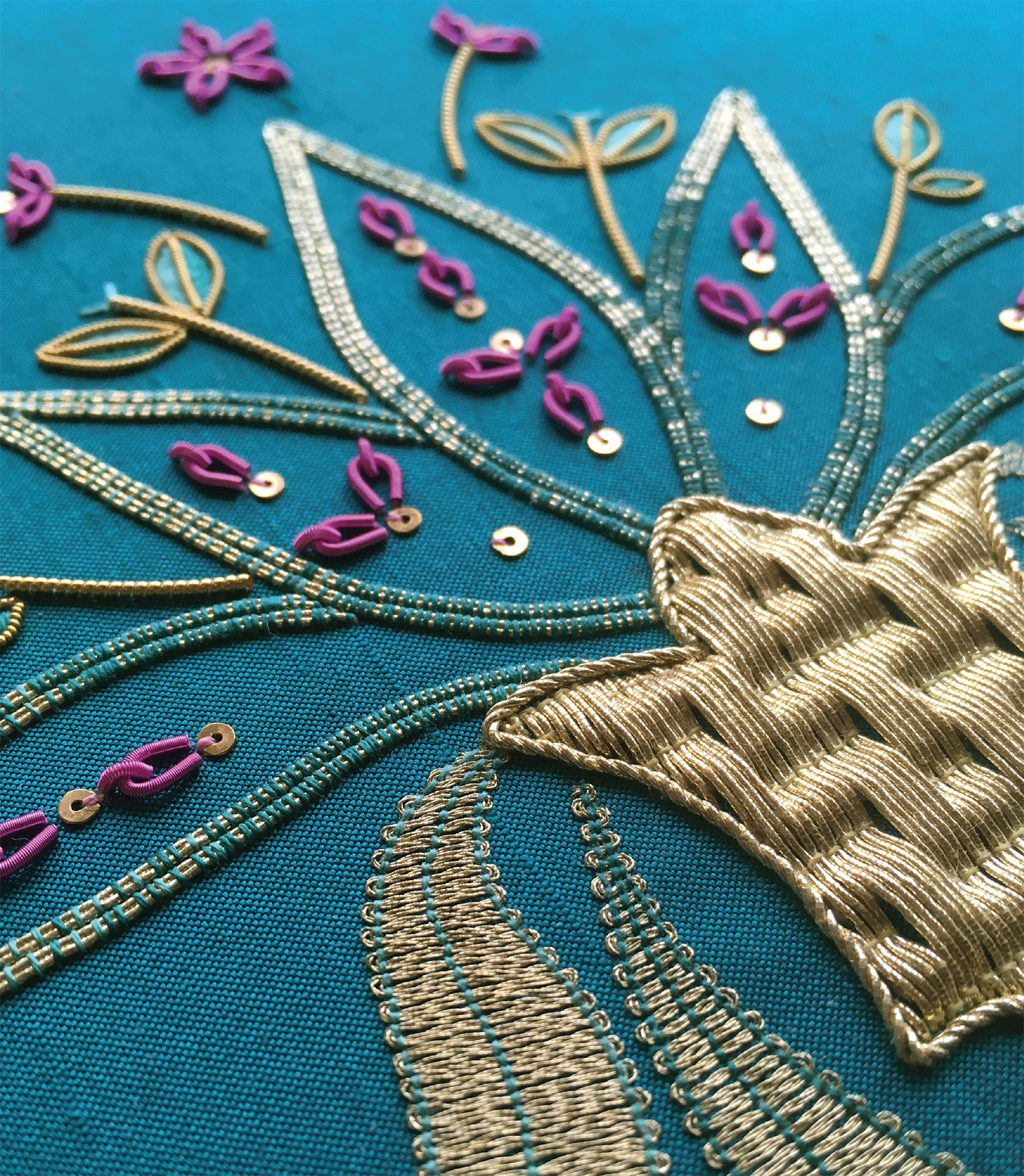
GOLDWORK
EMBROIDERY
Techniques and Projects
Lizzy Pye


First published in 2020 by
The Crowood Press Ltd
Ramsbury, Marlborough
Wiltshire SN8 2HR
www.crowood.com
This e-book first published in 2020
Lizzy Pye 2020
All rights reserved. This e-book is copyright material and must not be copied, reproduced, transferred, distributed, leased, licensed or publicly performed or used in any way except as specifically permitted in writing by the publishers, as allowed under the terms and conditions under which it was purchased or as strictly permitted by applicable copyright law. Any unauthorised distribution or use of this text may be a direct infringement of the authors and publishers rights, and those responsible may be liable in law accordingly.
British Library Cataloguing-in-Publication Data
A catalogue record for this book is available from the British Library.
ISBN 978 1 78500 648 7
Embroiders' acknowledgements
The author and publishers would like to thank the following embroiders for permission to use their work as the opening images to the following chapters Chapter 2: Becky Quine; Chapter 4: Helen Richman; Chapter 7: Death by Chocolate by Jo Heyde; Chapter 8: Jay Feather by Helen Richman; Chapter 9: Waterfall by Becky Quine.
 INTRODUCTION
INTRODUCTION

G oldwork is a fascinating type of embroidery which has captivated audiences for more than 2,000 years. It can be any work in which gold is stitched to cloth, and has varied as much through history as it has across the world.
Stitchwork in metal threads has always denoted wealth and power. By the nature of the work it must be valuable, not only for the physical content but also because of the lengthy hours of labour.
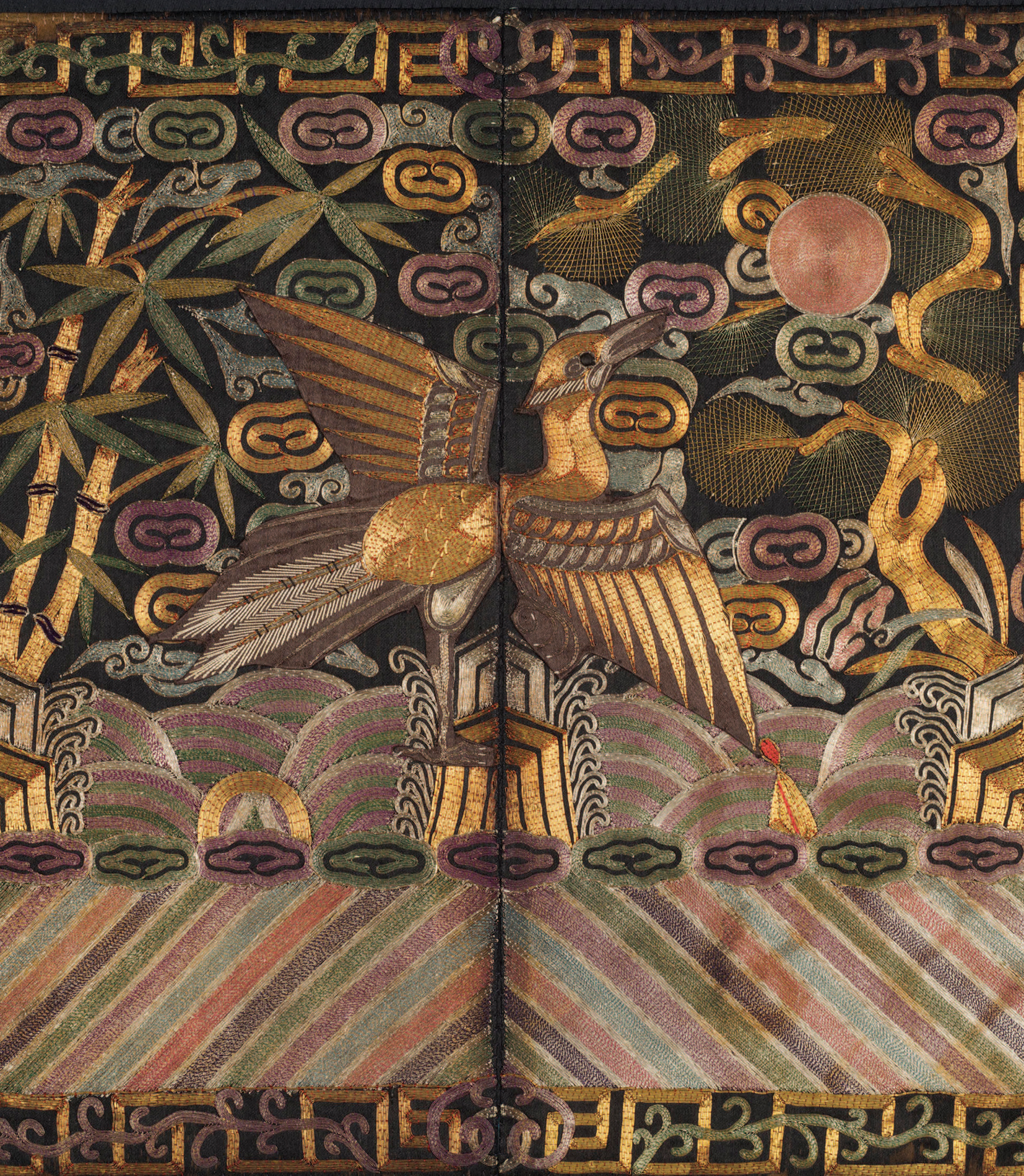
Chinese rank badge with a crane design. The bird is couched with Japanese thread in silver and gold the silver with matching thread to blend in, and the gold with the traditional red thread which brings out the warmth in the metal. The background is worked mainly in couched silver Japanese thread various different colours of silk thread are used for the couching to enhance the design. The crane has been worked separately and applied it may be a later addition.
This book does not set out to recall the entire history of the work, but in order to engage with traditional techniques we must begin by touching on its origins.
The earliest gold threads were pure gold, flattened and cut into strips. It became common to wrap gold or gilded silver around a core of silk thread, animal gut or paper. This is what is commonly called Japanese thread. The same techniques are still in use, but the gold content is far smaller. The plated metal is typically wrapped around a cotton core in modern threads, to make all sorts of different types of thread such as smooth passing and rococco.
When wire drawing developed, it became possible to coat a fine silver wire with gold, which could then be formed into many of the purl wires we still use today. Initially this would have been a very slow process in which a metal bar was drawn through progressively smaller holes until the desired diameter was reached. Modern machinery allows the metal to be drawn through many holes in one operation.
To thoroughly research goldwork, one must look to all corners of the Earth, from the first production of Japanese thread in China, through the glorious purl embroideries of India, to the ecclesiastical splendour of Britain. So many hands have touched this technique that one could not hope to learn it all.
Begin in the East with the ceremonial garb and well known rank badges of Imperial China. In Chinese goldwork, the dominant technique is the couching of bright, metal-wrapped thread known today as Japanese thread. Swirling waves of gold and stunning backgrounds complement fine silk embroidery featuring cranes, tigers, and many more symbols.
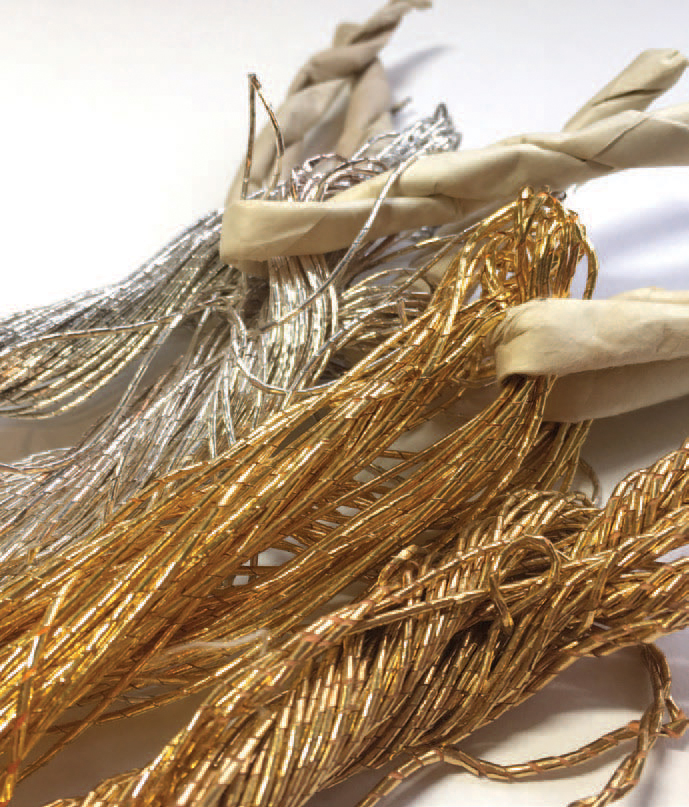
Antique Japanese threads in silver and gold, stored in paper twists.
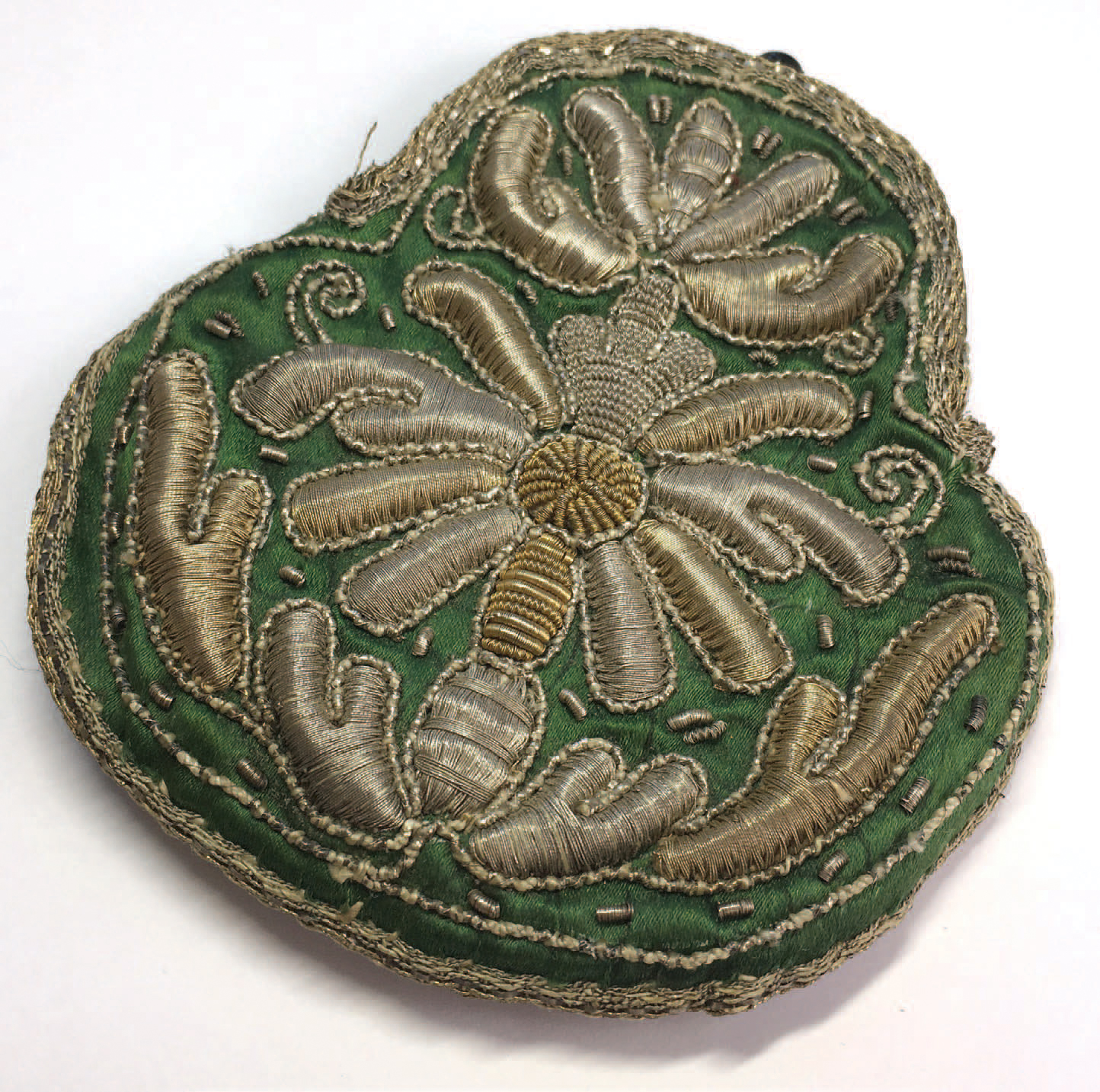
Indian purse, eighteenth to nineteenth century, from the authors collection. Most of the metal looks silver now, but some parts were originally gold. Fine metal threads are strapped over string padding and the shapes outlined with a wavy thread similar to check thread. The central shapes are stitched with cutwork in a combination of purl wires.
Travelling north, as did the gold threads themselves, it is worth looking at traditional Russian goldwork. Pieces of high quality were produced from the moment that Christianity was accepted in the country, and likely before that. In this distinctive style, the gold threads and wires were often combined with pearls, giving a pleasing contrast and added richness to the work.
If one begins to look west, the goldwork of India and the surrounding regions comes to the fore. In contrast to Chinese work, the gold embroidery of India is almost exclusively worked with purl wires, with little or no couching. There are many forms of goldwork in this part of the world, the most famous of which is Zardosi embroidery. There is a focus on rich, dense textures with the inclusion of looped purls and spangles, and the combination of metal thread with bright-coloured silk embroidery and even beetle wings.
Throughout the Middle East beautiful goldwork was stitched for religious artefacts and other ceremonial purposes.
Further west in Europe early goldwork was typically seen on articles of a religious nature, with pieces for the Christian Church worked mainly in couched threads. The technique Or Nu, shaded with silks over a ground of metal threads, was worked throughout Europe but most notably in Italy.
One of the most famous types of embroidery is Opus Anglicanum, which translates simply as English Work. This embroidery featured beautiful silkwork, usually religious figures, with a striking background of gold embroidered with the underside couching technique. This work was extremely expensive, yet it was exported in great quantity to other parts of the world, especially the Vatican.
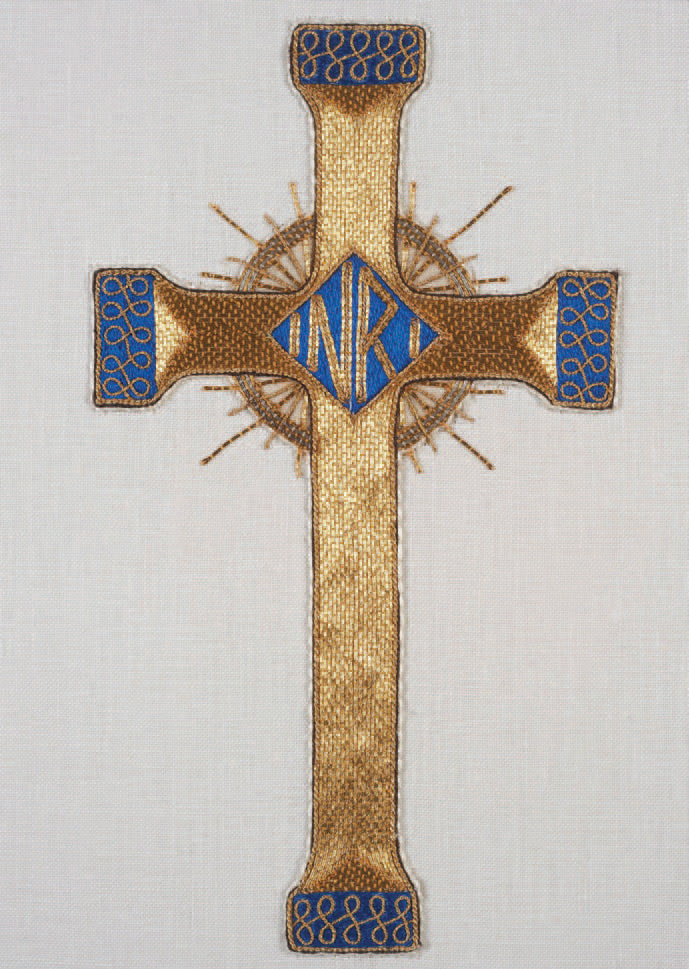
Part of an ecclesiastical sampler from the Royal School of Needleworks embroidery collection. It features traditional couched Japanese thread with bright blue silkwork.
In Britain, much of the early embroidery for the Catholic Church was sadly destroyed by decree of King Henry VIII in the sixteenth century. However, this could be said to have kick started goldworks popularity in secular society. Goldwork took a prominent place in fashion from then until the late nineteenth century, with stunning pieces luckily preserved in museums all over the world. The couched threads of earlier times were joined by a gorgeous variety of purl wires allowing for highly raised work for military use, and all kinds of intricate details in fashion.

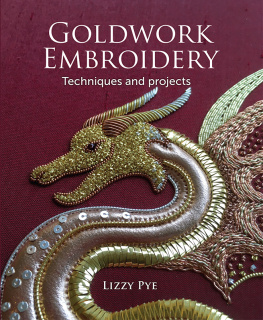
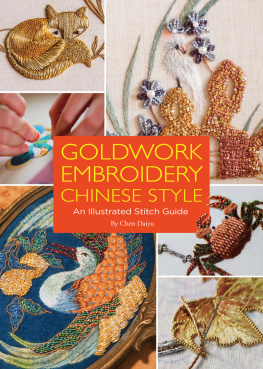
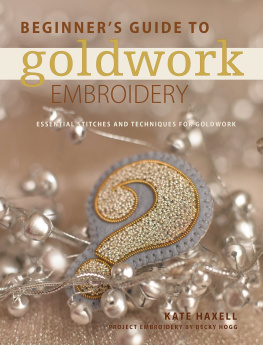
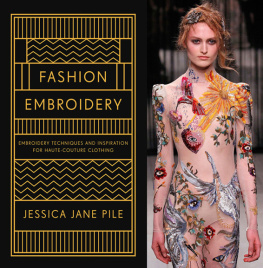
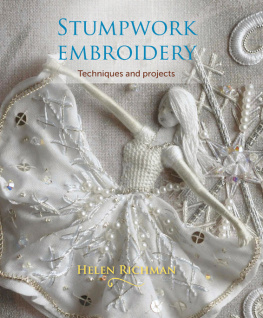
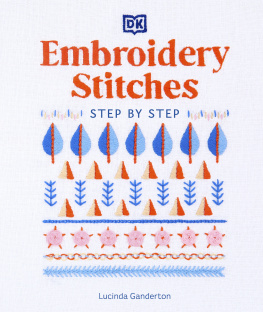
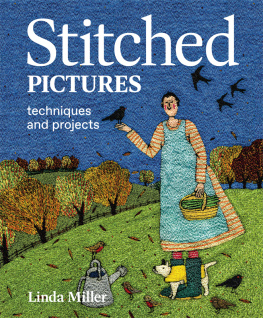

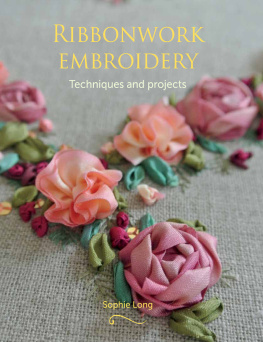

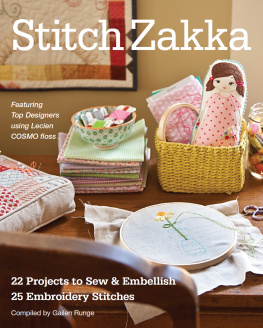





 INTRODUCTION
INTRODUCTION




